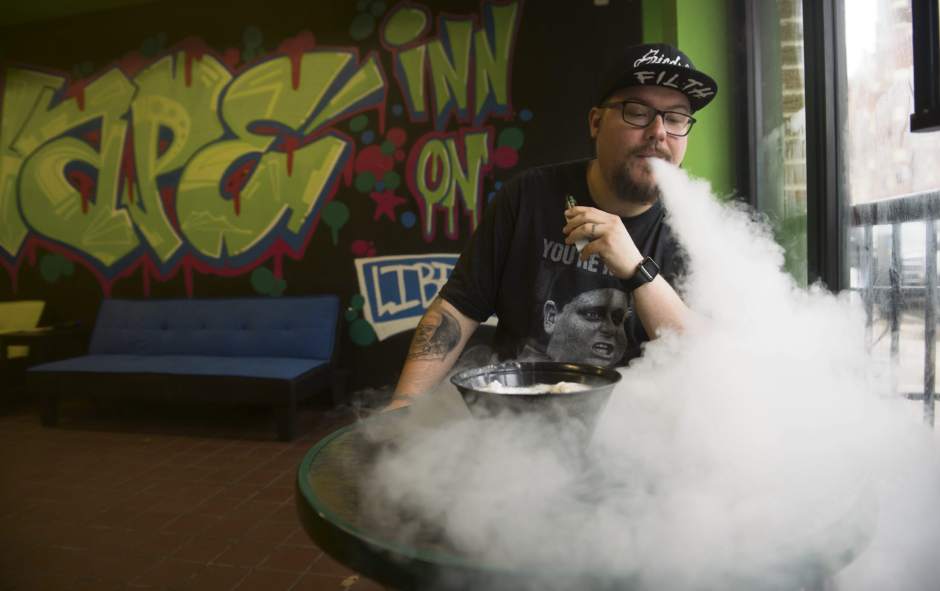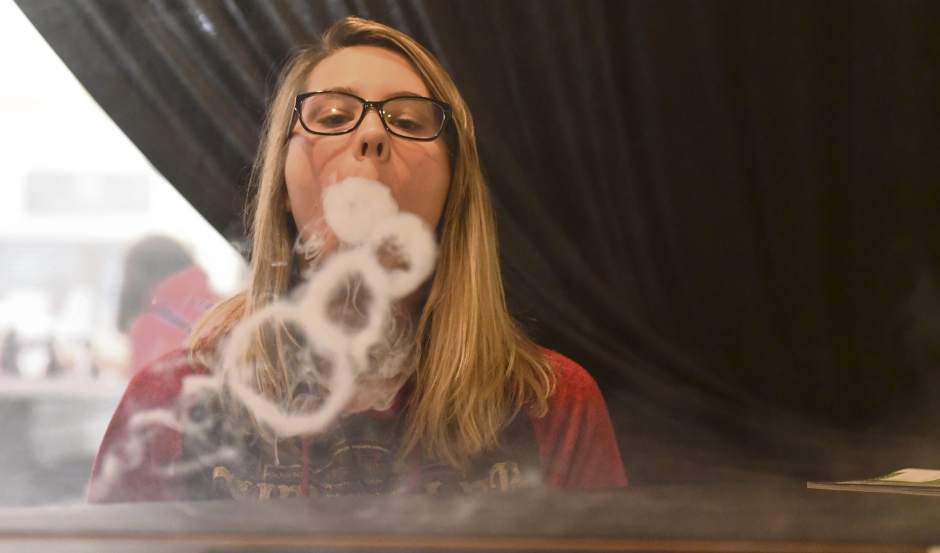Pitt study suggests 'vaping' could lead to cigarette use in young adults
Is e-cigarette "vaping" a way to help kick traditional cigarettes to the curb, or is it pushing "vapers" toward tobacco products?
Young adults who "vape" are four times more likely to pick up a regular cigarette habit, according to a University of Pittsburgh study released Monday.
But local vape vendors said they haven't seen that happening with their customers.
The research, published in the American Journal of Medicine, provides evidence that e-cigarettes are not a smoking cessation tool but rather a gateway to cigarette addiction, experts said.
"Early evidence on the potential value of e-cigarettes for cessation or reduction of cigarette smoking has been mixed," said lead author Dr. Brian A. Primack, director of Pitt's Center for Research on Media, Technology and Health and dean of Pitt's Honors College. "Our study finds that in nonsmokers, e-cigarettes make people more likely to start smoking. This supports policy and educational interventions designed to decrease the use of e-cigarettes among nonsmokers."
For Mark Slavkin, assistant manager at Cigarettes 4 Less in Scott — which sells traditional tobacco and vape-related products — customers have shown the opposite.
"Most of the people come in as (traditional tobacco) customers and can't wait to get off regular cigarettes," he said.
Slavkin, 29, includes himself in that group. He smoked cigarettes for more than 14 years before switching to vaping four years ago.
"I do have a small portion of customers who switched, lasted with vaping anywhere from six months to a year, and ended up falling back on cigarettes," he said.
The University of Pittsburgh research team analyzed a survey of U.S. adults ages 18 to 30 who were randomly selected in March 2013 to complete a questionnaire about their tobacco use. Eighteen months later, in October 2014, 915 participants who said they had never smoked cigarettes completed a follow-up survey.
Of the participants who said they vaped e-cigarettes in the first questionnaire, 47.7 percent had started smoking cigarettes 18 months later, compared with 11.2 percent of those who did not use e-cigarettes. Grants from the National Cancer Institute funded the research.
Primack said he believes vaping nicotine products "could lead e-cigarette users to seek out more nicotine-packed tobacco cigarettes."
"Young adulthood is an important time when people establish whether they use tobacco or not," Primack said in a news release. "Our findings suggest that clinicians who treat e-cigarette users should counsel them both about their potential for harm and about the high risk of transitioning to tobacco cigarettes among initial nonsmokers."
Primack said more research is needed, but he pointed to several factors that might lead a vaper to seek out traditional tobacco products: e-cigarettes mimic the behavior of smoking traditional cigarettes, the sweet vape is a gentle introduction to smoking harsher tobacco, and the buildup of nicotine addiction could lead e-cigarette users to seek out more nicotine-packed tobacco cigarettes.
Dan McKenzie, who works at PA Vapor on Route 22 in Murrysville, said he hasn't heard any of his customers say they've taken up or returned to cigarettes.
"A lot of our clientele are older people who use (vaping) as a (tobacco) replacement," he said. "I guess I've never really heard anyone say they went back."
Patrick Varine and Ben Schmitt are Tribune-Review staff writers. Reach Varine at 724-850-2862, pvarine@tribweb.com or via Twitter @MurrysvilleStar. Reach Schmitt at 412-320-7991, bschmitt@tribweb.com or via Twitter at @Bencschmitt.



